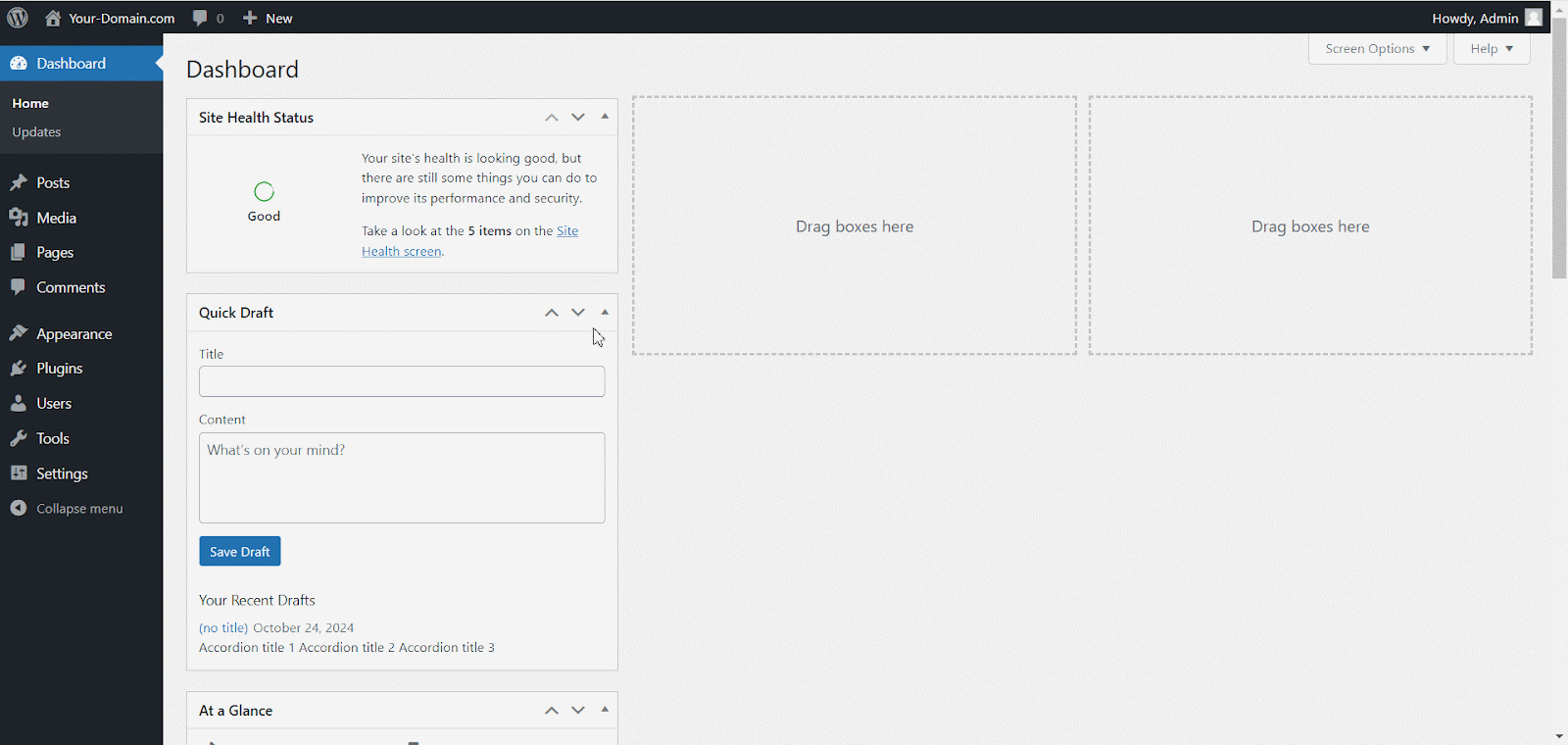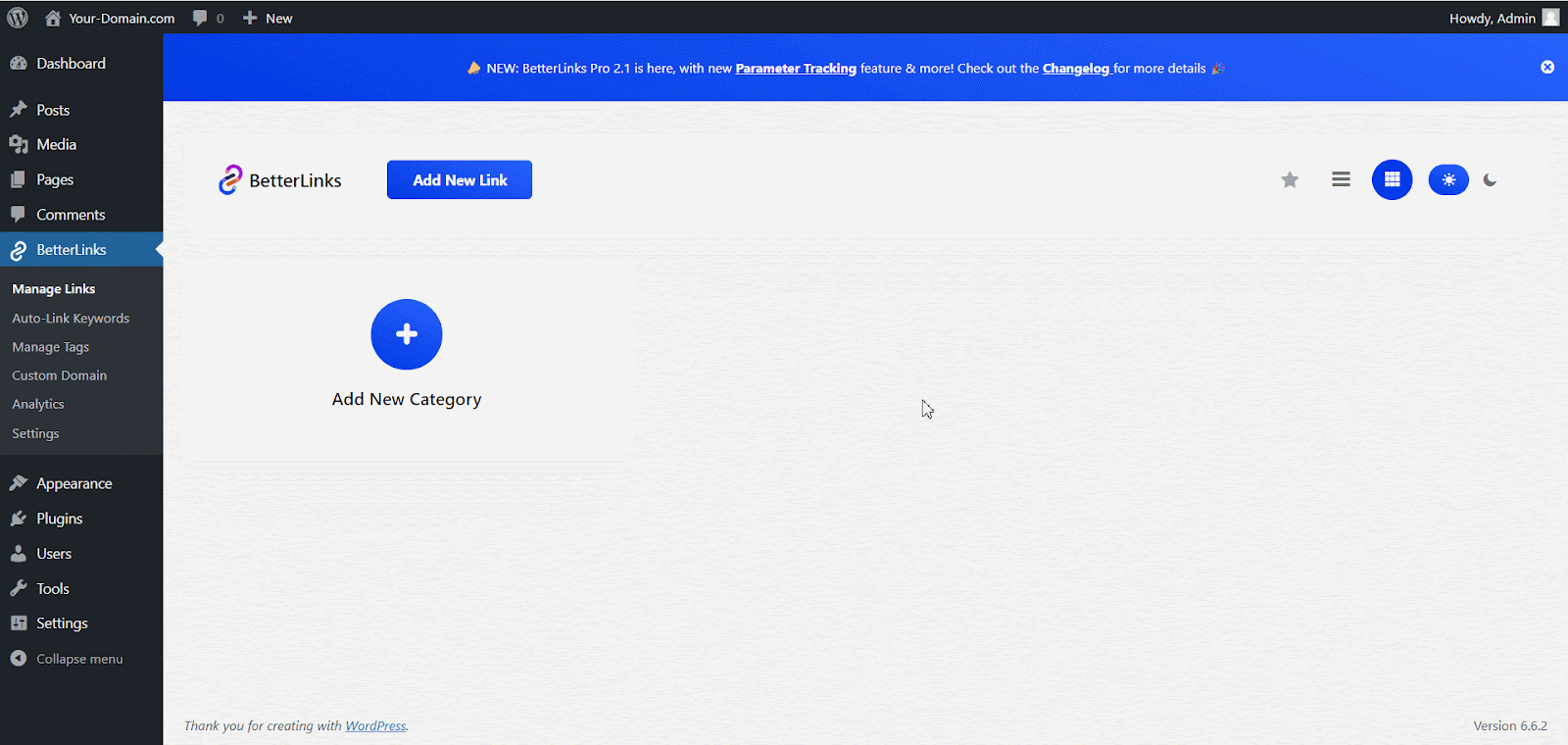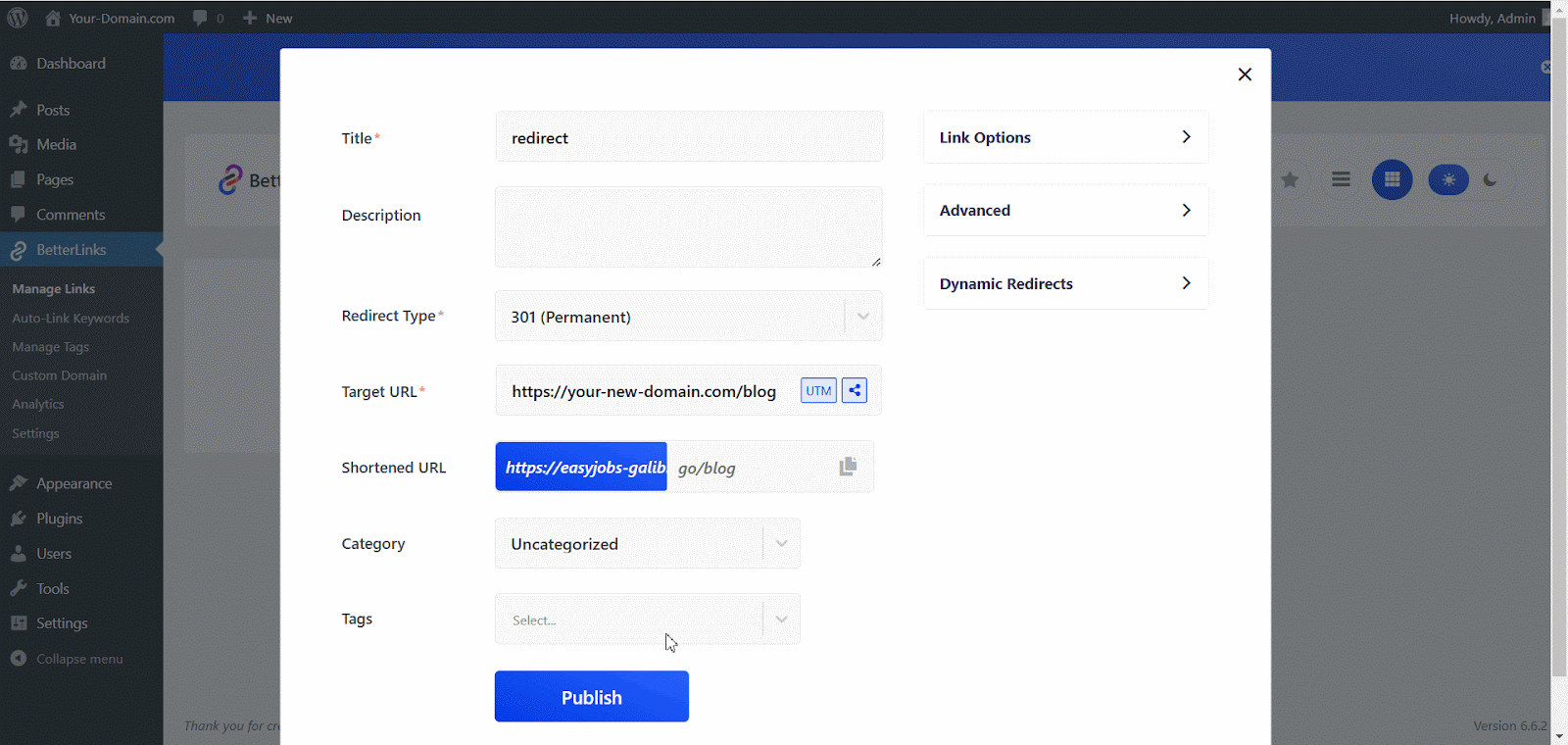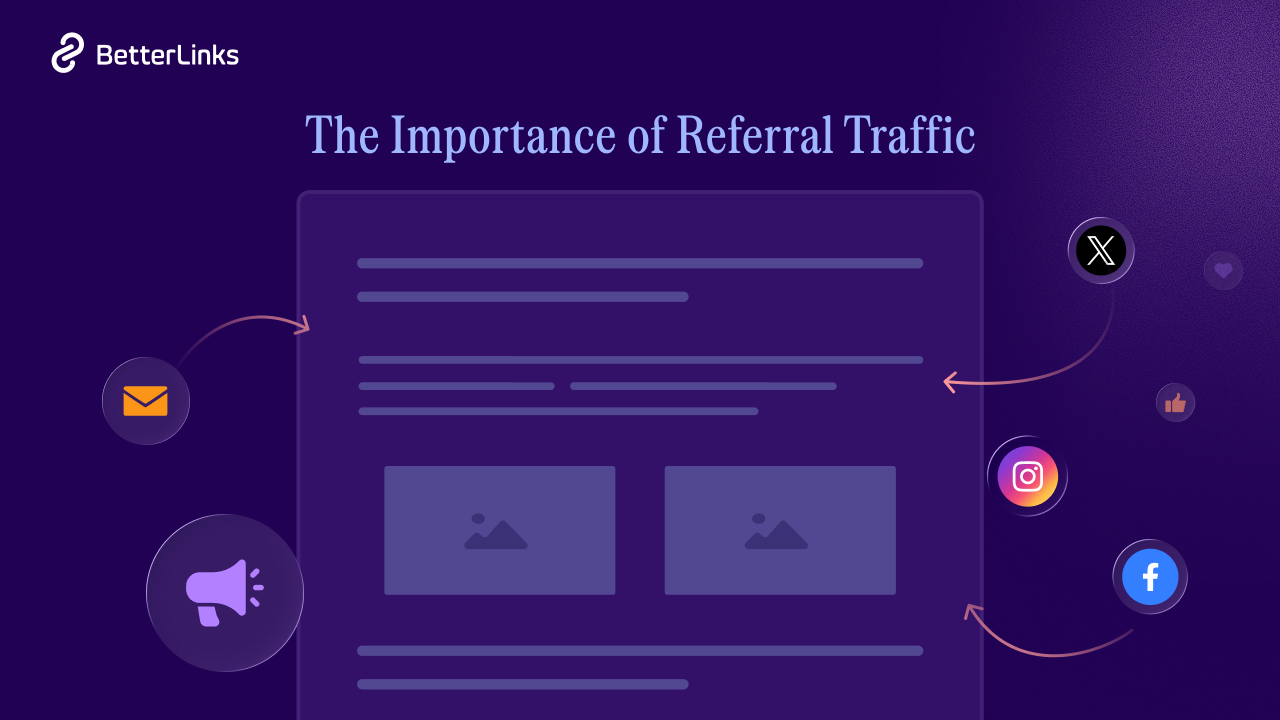Have you ever wondered how websites guide visitors to different pages without hurting their search engine rankings? The secret is temporary redirects, like the 302 or 307 redirect, a simple yet powerful process that every website owner should understand for better SEO.
Temporary redirects keep your visitors happy, prevent frustrating 404 errors and maintain your hard-earned Google rankings, all while giving you flexibility to update or experiment with your website.

Whether you are refreshing your site, running a campaign, or trying new content, temporary redirects ensure visitors never get stuck while keeping your SEO strong. Check out the tips below to easily master temporary redirects for seamless website navigation and sustained SEO performance.
5 Essential Use Cases for Temporary Redirects
Temporary redirects help manage changes on your website without hurting your SEO. Below are five practical ways to use them effectively:
Use Case 1: Website Maintenance And Updates
Think of it like renovating your kitchen, you still need to cook, so you set up a temporary kitchen elsewhere. During maintenance or updates, you do not want visitors landing on broken or incomplete pages.
How Temporary Redirects Help:
➡️ Send visitors to a branded maintenance page.
✅ Avoid 404 errors or bad user experience.
🔒 Retain your page’s SEO ranking during downtime.
👏 Maintain a professional online presence.
Implementation Tips: Make sure your maintenance page aligns with your brand’s design to maintain consistency. Clearly mention the expected return time so visitors know when to check back.
Also, include contact information in case they need immediate assistance, and suggest other helpful content they can explore in the meantime to keep them engaged.
Use Case 2: A/B Testing And Content Experiments
Just like trying different outfits to see which one suits best, you test pages to improve performance. You want to test page variations without affecting your main page’s SEO.
Why Use a 302 Redirect:
🔄 Keep your original page indexed and authoritative.
🎯 Get clear test results unaffected by SEO shifts.
🛠️ Run experiments with no permanent changes.
🔁 Easy to revert once testing ends.
Implementation Tips: When running A/B tests, focus on testing one element at a time to clearly understand what’s driving the change. Use tools like Google Analytics to accurately track performance and gain deeper insights.
Always define the duration of your test in advance to avoid confusion or skewed data. Once the test is complete, log your results for future reference and continuous website improvement.
Use Case 3: Seasonal or Limited-Time Campaigns
Running a Black Friday sale? Do not mess with your main product page, redirect instead! Promote time-sensitive offers without impacting your core page SEO.
Key Benefits:
📢 Drive campaign traffic without losing ranking.
🔁 Reuse setup for recurring events (Black Friday, Holidays).
⚙️ Simple to apply and remove.
🧭 Seamless user navigation before and after the campaign.
Implementation Tips: Align your temporary redirects with your marketing calendar to ensure perfect timing for seasonal or limited-time campaigns. Design high-converting landing pages that grab attention and drive results.
Use plugins like BetterLinks to easily automate the setup and cleanup process, saving time and reducing errors. Finally, track conversions and campaign performance separately to measure impact and refine future strategies.
Use Case 4: Incremental Site Migrations & DNS Changes
🚚 Moving your site is like relocating your store, do it in phases without losing customers. Large websites often migrate section-by-section or face temporary DNS issues.
Strategic Benefits:
🌐 Keep the site accessible during updates.
🛡️ Prevent traffic and revenue loss.
🤖 Allow search engines to gradually adjust.
Implementation Tips: When moving your site, set up redirects step-by-step for each part of the process. This helps the move go smoothly and avoids problems. Watch your visitors to catch and fix any access issues quickly. Keep everyone updated during the move, and have a backup plan ready in case something goes wrong.
Use Case 5: Temporary Content Relocation
📝 You would not show clients a half-painted office, so why show an unfinished web page? You are updating major content like a service or pricing page.
Why Use a Temporary Redirect:
👀 Visitors see a polished temporary page, not half-done work.
🤝 Maintain trust and professionalism.
📈 Keep original page SEO intact.
🏃🏻♂️ Work at your pace without pressure to publish fast.
Implementation Tips: Make your temporary page look like your brand by using the same colors and style. Tell visitors when your site will be back. Give them other ways to contact you or useful info to keep them interested while they wait.
Exploring 302, 307 And 303 Redirects
A temporary redirect is a way to send visitors from one webpage to another for a short time. It signals to browsers and search engines that the original page will return soon, so they should not update their links permanently. This keeps your SEO intact while giving you flexibility.
302 Redirect: The Go-To Temporary Redirect
A 302 redirect is the most commonly used type of temporary redirect in WordPress and across the web. It tells both browsers and search engines, “This page is temporarily located at a different URL, but the original page will be back soon.”
The key benefit of using a 302 redirect is that search engines continue to index the original URL, preserving its SEO value and avoiding any permanent impact on your search rankings. This makes 302 redirects perfect for situations like A/B testing, seasonal promotions or temporary maintenance pages.
307 Redirect: Preserving the HTTP Method
A 307 redirect is a more accurate and secure version of a 302 temporary redirect. While it also tells browsers that the redirection is temporary, it preserves the original HTTP request method, whether it is a GET or POST. This is especially important for web forms, eCommerce checkouts or APIs, where the method used carries important data.
For instance, if a user submits a payment form (POST request), a 307 redirect ensures that the same request structure is maintained without data loss or processing errors.
303 Redirect: Ideal for Form Submissions
A 303 redirect is specifically designed for redirecting users after a form submission. It converts the original request to a GET request and directs the user to a different page, such as a “Thank You” or confirmation screen.
This prevents duplicate form submissions if the user refreshes the page and enhances the overall user experience. It is particularly useful for multi-step forms, surveys or contact forms, where you want to clearly separate the submission action from the follow-up page.
| Example | Request Type | Scenario | How It Works | Real-Life Analogy | When to Use |
| Retrieving Information | GET | A user clicks a blog link to read an article. | The browser sends a GET request to fetch the article content. | Like asking a librarian for a book, you just want to view it. | Use GET when retrieving data (e.g., blog, homepage, product page). |
| Submitting Information | POST | A user fills out a contact form and clicks submit. | The browser sends a POST request with the form data to the server. | Like filling out a paper form and handing it to someone. | Use POST when sending data to be processed (e.g., forms, logins). |
| Redirect After Submission | POST → 303 → GET | After submitting a form, the user is redirected to a “Thank You” page. | A 303 redirect changes POST into a GET request for the confirmation page. | Like handing in your form, then being guided to a waiting room. | Use 303 after POST to redirect users without duplicate submissions. |
When to Use Temporary Redirects
Temporary redirects, like the 302 or 307 redirect are simple processes to guide visitors to another page while preserving your website’s SEO. Perfect for short-term changes like site updates, testing new content or running campaigns, these HTTP redirects prevent 404 errors and keep your search rankings safe and intact.

Check out the tips below to learn when and how to use temporary redirects effectively for seamless navigation and lasting SEO success. Temporary URL redirects are incredibly versatile. Use them to:
✅ Protect your original page’s search engine rankings
✅ Make temporary changes without confusing search engines
✅ Test new content or designs without committing
✅ Manage maintenance periods smoothly
✅ Run short-term campaigns while keeping your main content intact
Think of a temporary redirect like a road detour during construction. When a bridge is being repaired, drivers are temporarily guided along an alternate route.
Once the bridge is fixed, traffic flows back to the original road. Similarly, a temporary redirect sends visitors to a different page for a short time but they are expected to return once the original page is back in place.
Why Temporary Redirects Matter for Your Website
Temporary redirects might sound technical but they are actually one of the most helpful tools for keeping your website running smoothly especially during changes or updates. Whether you are fixing pages, running seasonal campaigns or testing new layouts, these redirects quietly protect your SEO and user experience behind the scenes.
🔒 Preserve Your Hard-Earned SEO Rankings
You have probably spent weeks or even months building up your content’s search engine visibility. A temporary redirect (like a 302 or 307) tells Google:
“Hey, this page has moved just for now, please do not forget the original link.”
According to namecheap, a well-handled 302 redirect retains up to 99% of link equity (SEO value), ensuring you do not lose traffic or rankings when making short-term changes.
🔧 Create a Smoother User Experience
Visitors hate hitting broken links or 404 pages, it feels like a dead end. They will always land on a helpful page instead with a temporary redirect in place.
For example, if you are redesigning your homepage, a 302 redirect can temporarily guide users to a “Coming Soon” or alternate version without confusion or drop-offs.
🔄 Stay Flexible While Updating Your Site
Whether you are A/B testing a new layout, running a holiday promotion or updating outdated content, temporary redirects give you breathing room without affecting your original page or your SEO.
How Search Engines React to Temporary Redirects?
Search engines like Google are pretty clever when it comes to handling temporary redirects. They do not just follow the link, they also try to understand what’s going on behind the scenes.
Think of Google as a super-organized librarian. If your favorite book (your webpage) is temporarily moved to a different shelf (redirected), the librarian does not throw away the record. Instead, they place a note:
“This book has moved for now. Let us check back soon to put it back where it belongs.”
So, the next time you use a 302 or 307 redirect, remember, it is not just a technical step. It is a smart way to keep your visitors happy and your SEO intact while you make updates or test new ideas.
Here’s what happens when a temporary redirect (like 302 or 307) is spotted:
✅ Your original URL stays in Google’s index , it is not forgotten or replaced.
🔄 The new page doesn’t receive the full SEO boost, because search engines know it is not a permanent move.
🕵️ Google checks back regularly to see if the redirect is still active or if things have returned to normal.
📈 Once the redirect is removed, your original page’s ranking power is restored automatically.
If you are looking for a simple yet powerful way to handle temporary redirects without touching a single line of code, BetterLinks is your go-to solution. It is designed to make redirect management easy, efficient and SEO-friendly, Whether you are running campaigns, updating pages or migrating your site.
Now, let us explore why BetterLinks is a great choice for handling temporary redirects.
Why Choose BetterLinks for Managing Temporary Redirects?
Managing redirects is a crucial part of running a successful WordPress website and BetterLinks makes it incredibly simple.

Whether you are a beginner or an experienced user, this powerful plugin offers everything you need to handle redirects with ease. Here’s what makes BetterLinks stand out:
✅ Beginner-Friendly Interface
BetterLinks comes with a clean, intuitive dashboard that lets you create and manage redirects with no coding required. Everything is just a few clicks away.
⚡ Fast Setup, Effortless Control
Installing and configuring BetterLinks is quick and painless. You can view, edit, or delete redirects from one central place, making link management seamless.
🔁 Full Redirect Support
From permanent 301s to temporary 302 and 307 redirects, BetterLinks gives you the flexibility to manage any type of redirection based on your needs.
🗂️ Organized Link Management
Keep your links tidy and under control with built-in tools to group, label, and track them, all within your WordPress dashboard.
BetterLinks goes beyond just setting up redirects, it gives you complete control over how your links are managed and organized. You can easily group and categorize your redirects, making it simple to track and update them whenever needed.
📊 Built-in Analytics
One of BetterLinks’ most valuable features is its built-in analytics system. It tracks how many times each redirect link has been clicked, giving you clear insights into visitor behavior. With this data, you can identify which links perform best and make informed decisions to optimize your site’s performance.
🖇️ SEO-Friendly Redirects
BetterLinks is built with SEO in mind. When you configure redirects properly, search engines can clearly understand which pages have moved or been updated; helping you retain and even improve your rankings. This ensures your site stays optimized while delivering a smooth experience for users.
Types of Temporary Redirects You Can Set Up with BetterLinks
BetterLinks supports multiple redirect types, making it easy to address different scenarios on your website. Knowing how each one works helps you choose the best option for your needs. Here are the key redirect types you can create using BetterLinks:
| Redirect Type | Purpose | When to Use |
| 302 (Temporary) | Redirects users temporarily without affecting SEO rankings | When testing new pages or running time-limited campaigns |
| 307 (Temporary – Strict) | Similar to 302 but preserves the request method (like POST) | When you need a temporary redirect with method retention |
How to Set Up Temporary Redirects Using BetterLinks
BetterLinks is a powerful WordPress plugin that makes managing all types of redirects easy and efficient. Follow these simple steps to set up redirects on your WordPress site:
Install and Activate BetterLinks
Go to your WordPress Dashboard and click on Plugins from the sidebar menu.
Select Add New, then type ‘BetterLinks’ into the search bar. Once you find the plugin, click Install Now and then Activate to enable it on your site.

Create a New Redirect
Click the “Add New Link” button to start creating your redirect. A form will appear where you can enter the necessary details. Such as, Name your redirect for easy identification later. Enter the source URL (the old link you want to redirect from). Enter the destination URL (where you want users to be redirected).
Choose the redirect type, 302 (temporary) or 307 (temporary with method retention). Optionally, add tags, categories, or UTM parameters to better organize and track your link. Once filled out, save your changes and your redirect is ready to go!

Publish and Test Your Redirect
After entering all the details, click the “Publish” button to activate your redirect. Once it’s live, make sure to test the link to confirm it’s working as expected and directing users to the correct destination.

Simple Tips to Fix Common Temporary Redirect Mistakes
Redirects can make or break your website’s user experience and SEO performance. While temporary redirects are great for short-term changes, common mistakes can lead to confusion, slow load times and lost search rankings. Follow these simple tips to ensure your redirects are set up correctly and keep your site running smoothly.
- Use 301 for Permanent Moves: Do not use a 302 if you are not planning to go back, go with 301 to keep your SEO value.
- Set Reminders to Remove Old Redirects: Review and remove expired redirects regularly to avoid outdated or confusing user experiences.
- Avoid Redirect Chains: Always point redirects straight to the final page. Too many hops slow things down and hurt SEO.
- Test on All Devices: Make sure redirects work smoothly on both desktop and mobile to avoid broken user journeys.
- Use Tools for Redirect Audits: Plugins like BetterLinks or Search Console help find and fix redirect issues faster.
Temporary redirects are powerful tools when used correctly, so take the time to implement and manage them with care.
Start Redirecting Smarter for Better Web Performance
Temporary redirects are like having a Swiss Army knife in your web management system– versatile, reliable and essential for handling various situations professionally. Let us wrap up with these key takeaways to master temporary redirects.
Keep your site healthy with regular tracking and cleanup to avoid performance issues and maintain SEO strength. Put users first by making redirects seamless and helpful, not confusing. Stay curious and adapt as web practices evolve to keep your strategy sharp. Your visitors and search engines will notice and you will enjoy peace of mind with a well-managed website.
Is this blog helpful? Join our community to stay updated with the latest blogs, product reviews and WordPress solutions. Subscribe to our blog for in-depth tutorials, tips and product demos or visit our website for the newest updates.
FAQs on Temporary Redirects for Your Website
Got questions about temporary redirects? Our FAQs break down everything you need to know:
What is a redirect and why does it matter?
A redirect moves users and search engines from one URL to another, ensuring they find the right content. Temporary redirects (302) are for short-term changes, while permanent ones (301) are for lasting moves.
What is the difference between a 301 and 302 redirect?
A 301 redirect is for permanent moves, passing nearly all SEO value to the new URL. A 302 is for temporary changes, keeping the original URL in search results without transferring link authority.
You can easily configure 301 or 302 redirects in WordPress to match your needs, avoiding SEO mistakes with BetterLinks.
How do I remove temporary redirects from my site?
Temporary redirects can pile up and cause issues if left unchecked. To clear them, check your WordPress plugin settings, .htaccess file or hosting panel, and delete outdated 302 rules.
What is a 302 error and how does it affect my SEO?
A 302 error happens when a temporary redirect is misconfigured, like redirecting to the wrong page or creating loops. This can confuse search engines, leading to indexing issues or lost rankings.
How do redirects work for my website?
Redirects send users and search engines from one URL to another. A 302 redirect is temporary, guiding visitors to a new page while keeping the original URL in search results, ideal for short-term changes like maintenance.
How do I redirect HTTP to HTTPS using .htaccess?
To redirect HTTP to HTTPS, add a rule to your .htaccess file to automatically send users to the secure version of your site, boosting security and SEO. Instead of manually editing .htaccess, use BetterLinks to set up HTTP-to-HTTPS redirects effortlessly in WordPress, no coding required.
What does a temporary redirect response do in a browser?
A temporary redirect (302) tells a browser to take users to a different page for now, without updating bookmarks or search engine indexes, as the original URL will be used again.






